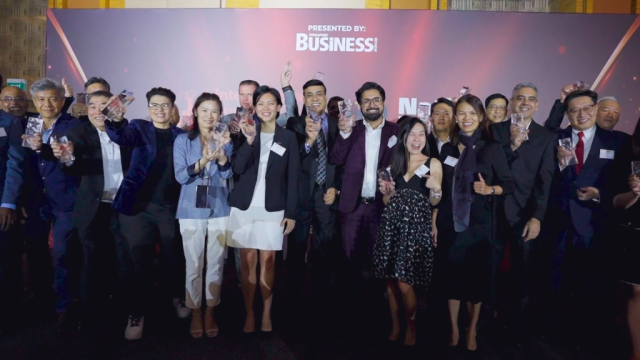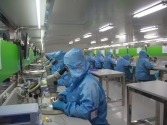
Can Taiwan afford to raise wages to counter inflation?
While local enterprises could afford the cost of salary increase, export-oriented businesses may not follow suit, given their current weakness in export competitiveness.
Several names in the electronics and financial industries have promised to lift employee pay by 3%-5% this year to counter the reported inflation of 2%. The government is also considering raising minimum wages in 3Q.
However, analysts warn of cyclical headwinds limiting corporate profits and the ability to pay higher wages. DBS contends that it is doubtful whether significant increases will materialize this year. The risk of a wage-inflation spiral or substantial tightening of monetary policy is low
Here's more from the research by DBS Economics:
There has been growing talk about wage hikes in Taiwan since the government announced in April it would hike fuel/electricity prices. The hope among workers is that higher wages would offset inflation. Some big enterprises in the electronics and financial industries recently have promised to lift employee pay by 3%-5% this year vs. the expected inflation of about 2%. It is reported that the government will also consider raising minimum wages, when the Council of Labor Affairs meets in 3Q to review the matter.
Wage growth has remained low for a decade
Wage growth in Taiwan has been very low over the past decade, averaging about 1% per year across all manufacturing and services sectors between 2000 and 2011. There is certainly scope for many manufacturing enterprises to raise wages, if considering the gains in productivity that mitigate the impact of wage hikes on unit labor costs. A wage hike of 4%-5% per year would not greatly raise unit labor costs in the manufacturing sector given that productivity has been growing at near 5% per year over the past decade.
In fact, the unit labor costs in the manufacturing industry have been sliding persistently for a decade, potentially offering Taiwanese exporters a strong cost advantage when competing in the international market.
The cost advantage translated into export competitiveness?
Despite the labor cost advantage, there is little evidence suggesting Taiwanese exporters have enhanced their trade competitiveness in the international market over the past decade. In fact, Taiwan’s market share occupied in major overseas markets has slipped. Among the US’ imports of machinery and transport equipments, including Taiwan’s pillar products of electronics, Taiwan’s share fell by 2ppt from 5% in 2000 to 3% in 2011. Similarly, in the European market, Taiwan’s share dropped by 1ppt in the past decade from 5% to 4%.
Some may argue that the decline in Taiwan’s market share in G2 was related to Taiwanese manufacturers’ relocating to China, which resulted in a decrease in Taiwan’s direct exports to the G2. If that were the case, a corresponding rise in Taiwan’s exports to China should be seen. Looking at China’s imports of machinery, transport equipments and optical instruments, Taiwan indeed gained shares between 2000 and 2007. This however, was followed by a rapid drop in the market occupancy ratio starting from 2008 at -2ppt, by 2011. As such, compared to a decade ago, Taiwanese exporters didn’t boost their market occupancy in China significantly.
Cost/price is not the only factor dictating trade competitiveness. Other factors, such as technology, quality, brands and marketing strategy matter too. Taiwan focuses on the business model of contract manufacturing with relatively weak control on technology, brands and marketing. This helps explain why Taiwanese exporters have been lagging behind the Korean counterparts in expanding overseas sales and boosting the market occupancy ratios. The model of contract manufacturing also implies low value-added and weak pricing power, which actually requires Taiwanese exporters to capitalize the cost advantage to maintain a still-decent profit growth compared to the peers.
The structural factors limiting wage hikes
The competitiveness of trade related to the core factors such as technology and brands can’t be enhanced soon. Long-term efforts on technology advancement and reform of business strategy would be needed. Due to the structural weakness in export competitiveness, exporters may find the difficulties of digesting the costs of wage hikes through raising export prices without dampening overseas sales growth. The more likely outcome of wage hikes is that exporters will suffer a slowdown in their profit margin growth and overall profit growth.
As such, despite the talk about wage hikes in certain companies and certain industries this year, it is doubtful whether significant, broad-based wage increases will materialize. The domestically-oriented enterprises could absorb the costs of higher wages, as wage hikes support consumption and domestic sales. But the export-oriented enterprises would hesitate to raise wages, worrying about the adverse impact on profits.
Accordingly, the prospects for wage-induced inflation seem unlikely this year, as does an immediate policy response of monetary tightening by the central bank.
...and the cyclical factors
Cyclical factors also point to low wage growth this year. Following a technical recession in 2H11, the economy has continued to grow below its potential, at only 1.1% in 1Q. There is still excess capacity in the labor market, with the unemployment rate of 4.1% currently remaining higher than the bottom of 3.9% in 1H08.
Looking ahead, growth should remain soft in the near-term, given the increased market uncertainties in Europe and certain low growth there. In sum, a slow economic recovery in the current cycle should limit the performance of corporate profits and thus the affordability of wage hikes.
























 Advertise
Advertise










